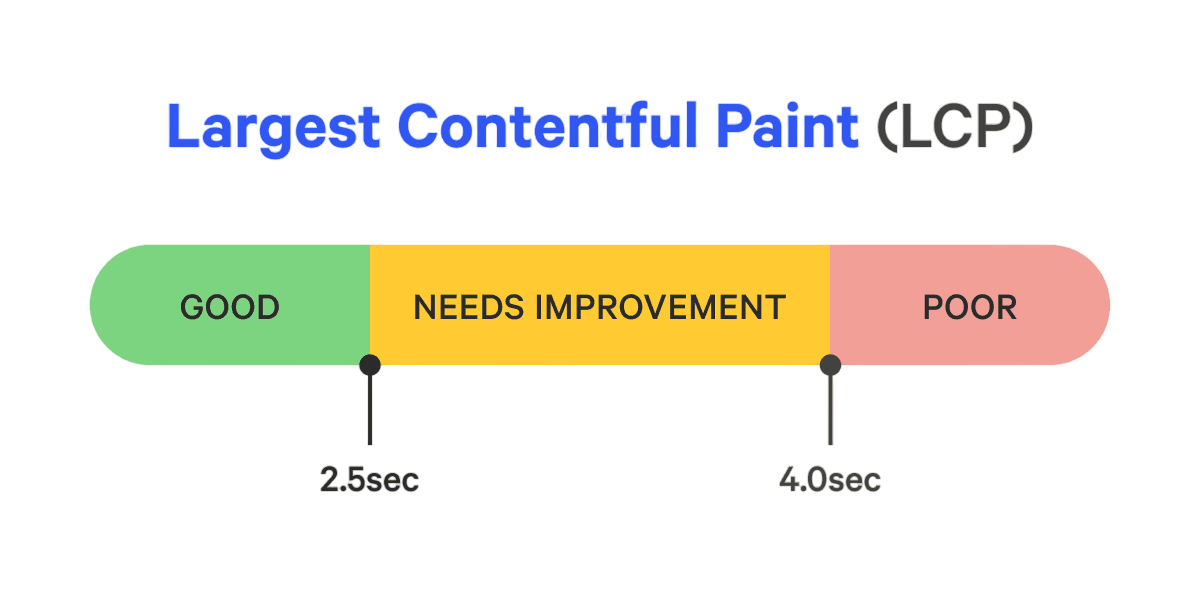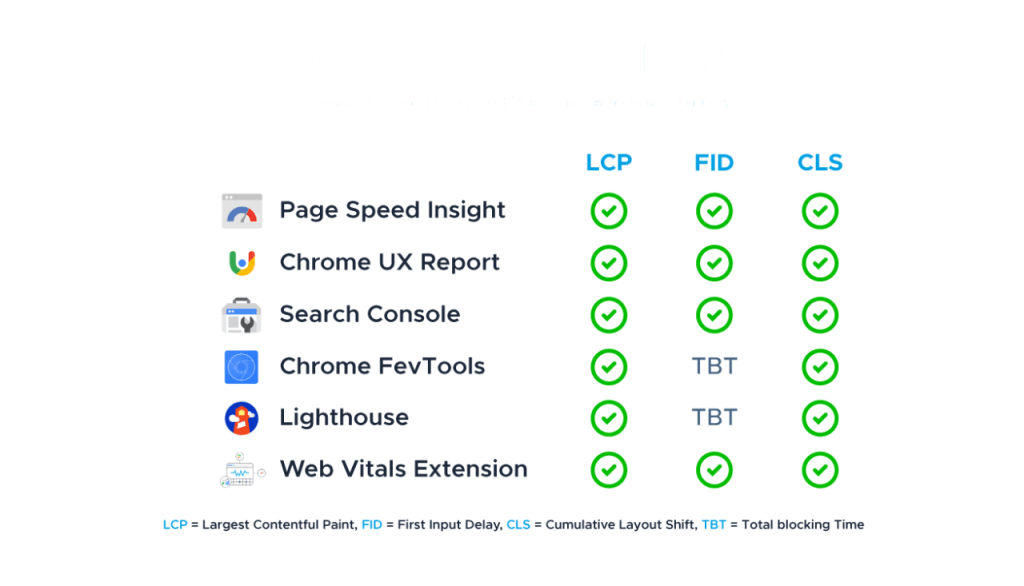
- What Are Core Web Vitals?
- Largest Contentful Paint (LCP) Explained
- First Input Delay (FID) Overview
- Cumulative Layout Shift (CLS) Breakdown
- Tools to Measure Core Web Vitals
- Improving LCP: Tips and Tools
- Optimizing FID with JavaScript Techniques
- Reducing CLS with Stable Layouts
- Conclusion
What Are Core Web Vitals?
Core Web Vitals are a set of performance metrics defined by Google to evaluate a user’s experience when loading a webpage. These vitals focus on three key aspects: loading performance, interactivity, and visual stability. Introduced as part of Google’s Page Experience update, Core Web Vitals are considered ranking signals that directly affect a site’s visibility in search results. The three main metrics are Largest Contentful Paint (LCP), First Input Delay (FID), and Cumulative Layout Shift (CLS). By focusing on these indicators, developers and SEO professionals can ensure a smoother user experience, reduce bounce rates, and improve engagement metrics.Core Web Vitals are a set of important metrics introduced by Google to measure the quality of user experience on a website. They focus on three key aspects: loading performance, interactivity, and visual stability. The first metric, Largest Contentful Paint (LCP), measures how quickly the main content on a page loads, ideally within 2.5 seconds. The second, First Input Delay (FID), Digital Marketing Training tracks the responsiveness of a site by measuring the time it takes for the page to respond to a user’s first interaction, such as clicking a button. The third, Cumulative Layout Shift (CLS), assesses how stable the page layout is during loading, ensuring elements don’t unexpectedly move around and disrupt the user experience. Together, these metrics help website owners understand and improve how visitors perceive their site’s performance. Google also uses Core Web Vitals as part of its search ranking criteria, making it crucial for businesses to optimize their sites to enhance user satisfaction and boost their visibility in search results.
Ready to Get Certified in Digital Marketing? Explore the Program Now Digital Marketing Online Training Offered By ACTE Right Now!
Largest Contentful Paint (LCP) Explained
LCP measures the time it takes for the largest visible content element (usually an image or a block of text) to load on a user’s screen. It’s a vital indicator of perceived loading speed, which can significantly impact your target audience Content Distribution and overall user engagement. Google recommends keeping Contentful Paint LCP under 2.5 seconds for optimal performance. A slow LCP can lead to user frustration, especially on mobile networks or slower devices.

Common culprits of poor LCP scores include slow server response times, render-blocking JavaScript and CSS, and unoptimized images. Improving LCP requires a detailed review of page assets and render processes. Prioritizing above-the-fold content and lazy loading off-screen images are some of the most effective ways to improve LCP.
First Input Delay (FID) Overview
- Definition: Measures the delay between a user’s first interaction and the browser’s response.
- Importance: Indicates how quickly a page becomes interactive and responsive. Ideal Score: Less than 100 milliseconds for a smooth user experience.
- Common Causes of High FID: Heavy JavaScript execution, a slow main thread, and third-party scripts can hinder performance factors that even your Big Brands Transforming Experience experience must address to ensure seamless user interaction.
- Impact: High FID leads to user frustration and poor engagement.
- Optimization Tips: Minimize JavaScript, defer non-essential scripts, and optimize code execution.
- SEO Relevance: FID is a Google ranking factor under Core Web Vitals.
- Google PageSpeed Insights: Analyzes a URL and provides LCP, FID, and CLS metrics with suggestions.
- Lighthouse: A Chrome DevTools audit tool offering performance diagnostics.
- Chrome User Experience Report (CrUX): Offers real-world data from actual Chrome users.
- Search Console Core Web Vitals Report: Highlights pages needing improvement based on field data.
- Web Vitals Chrome Extension: hows real-time metrics for any page. Each tool offers different levels of granularity, helping you fine-tune your SEO Tips To Rule Google Maps effectively. and combining lab (simulated) and field (real-user) data gives the most accurate insights. Regular monitoring helps in tracking performance trends and prioritizing fixes.
- Optimize Images: Compress images and use next-gen formats like WebP.
- Use a CDN: Reduce latency by serving content from geographically closer servers.
- Minimize Render-Blocking Resources: Load critical CSS inline and defer non-critical CSS an essential step in both your SEO tips to rule Google Maps and the technical modules of any solid Digital Marketing Certification Process.
- Preload Key Resources: Fonts, hero images, and major above-the-fold content.
- Server Optimization: Reduce Time to First Byte (TTFB) by upgrading server hardware or optimizing back-end processes.
- Code Splitting: Break down code into smaller chunks to avoid loading unnecessary scripts.
- Minify and Compress JS: Reduces file size and speeds up load time.
- Defer and Async Attributes: Ensure scripts load without blocking rendering.
- Web Workers: Offload heavy tasks away from the main thread.
- Limit Third-Party Scripts: These can significantly slow interaction readiness.
- Set Size Attributes: Always define width and height for images and videos.
- Avoid Inserting Content Above Existing Content: Reserve space or use placeholders.
- Use Font Display Settings: Use font-display: swap to avoid invisible text during font loading.
- Preload Fonts: Helps prevent layout shifts due to late font rendering.
- CSS Aspect Ratio Boxes: Maintain space for dynamic content.
To Explore Digital Marketing in Depth, Check Out Our Comprehensive Digital Marketing Training To Gain Insights From Our Experts!
Cumulative Layout Shift (CLS) Breakdown
CLS is a metric that quantifies unexpected layout shifts on a webpage. A layout shift occurs when elements move unexpectedly during loading, often leading to accidental clicks or poor user experience. For example, if you’re about to click a button and an image loads above it, pushing the button down, that’s a layout shift. Google recommends a CLS score of less than 0.1. Causes of high CLS include images without defined dimensions, dynamically injected content, and custom fonts loading late. Fixing CLS involves ensuring elements reserve enough space and using CSS aspect ratio boxes, font-display settings, and preloading important assets.Cumulative Layout Shift (CLS) measures the visual stability of a webpage by tracking unexpected layout shifts that occur while the page is loading. These shifts happen when visible elements such as images, buttons, or text move from one position to another without user interaction, which can be frustrating and disruptive. For example, a user might try to click a button, but if the layout suddenly shifts, they may end up clicking something else by mistake. CLS is calculated based on the total amount of visible movement on the page, with a lower score indicating a more stable and user-friendly experience. Google recommends aiming for a CLS score below 0.1 to ensure minimal layout shifts. To reduce CLS, Digital Marketing Training , web developers can reserve space for images and ads, avoid inserting content above existing content unexpectedly, and use size attributes or CSS aspect ratio boxes. Improving CLS not only enhances the user experience but also positively impacts search rankings, as Google factors visual stability into its Core Web Vitals assessment.
Tools to Measure Core Web Vitals
There are several tools available to measure Core Web Vitals accurately:

Looking to Master Digital Marketing? Discover the Digital Marketing Expert Masters Program Training Course Available at ACTE Now!
Improving LCP: Tips and Tools
To improve LCP scores, one must focus on optimizing rendering and reducing bottlenecks in loading the largest content. Effective strategies include:
These techniques collectively improve the perceived load speed and user satisfaction, especially on mobile devices.
Optimizing FID with JavaScript Techniques
As FID is often affected by JavaScript execution, improvements center around reducing main thread blocking time. Key JavaScript optimizations include:
Using these techniques ensures that interactive elements respond quickly and fluidly, especially on slower devices or networks.
Preparing for Digital Marketing Job Interviews? Have a Look at Our Blog on Digital Marketing Interview Questions and Answers To Ace Your Interview!
Reducing CLS with Stable Layouts
A stable layout is key to improving CLS. Top Digital Marketing Experts Best practices include:
These changes reduce visual jank and improve the perceived quality of the website.
Conclusion
In today’s Digital Marketing Training landscape, optimizing Core Web Vitals is essential for delivering a fast, responsive, and visually stable user experience. By focusing on improving Largest Contentful Paint, First Input Delay, and Cumulative Layout Shift, businesses can enhance website performance, increase user satisfaction, and boost their search engine rankings. Regularly monitoring these metrics and implementing best practices ensures your site meets Google’s standards and stands out in a competitive online environment. Prioritizing Core Web Vitals is not just about technical improvements, it’s about creating a seamless and engaging experience that keeps visitors coming back.




